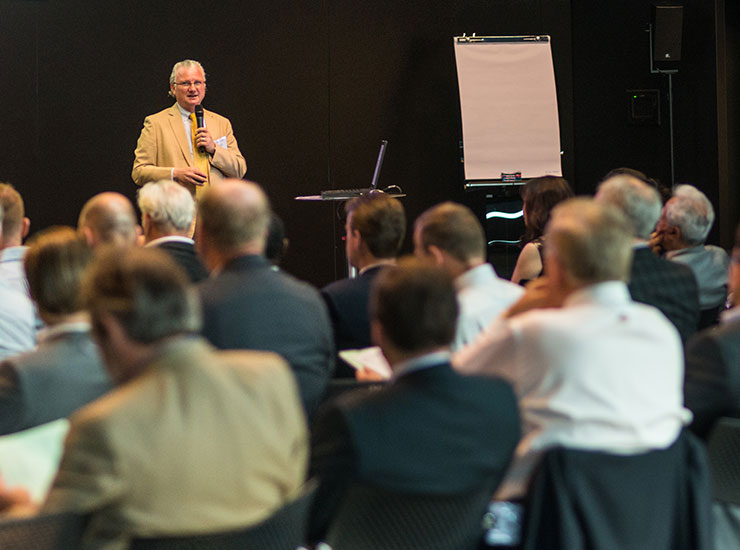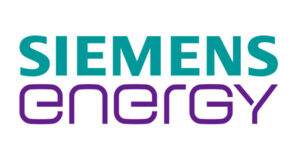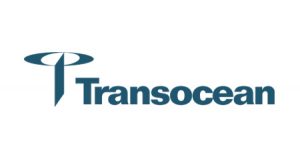Meeting & Venue Details
All times listed are central (08:30 Houston / 14:30 UK / 17:30 Dubai).
Hybrid Event
The event will be both in-person and virtual/online. The in-person venue is Transocean in Houston. Please register early to ensure your seat.
When arriving at Transocean, ensure you allow extra time to pass through building security. There will be a separate table when you walk into the building with Transocean security badges for each pre-registered attendee. Participants must show a government photo ID to receive their security badge. Separate conference badges will be picked up at the IADC Registration Desk on the second floor after passing through security.
Transocean Offshore Training Facility
Address 1414 Enclave Pkwy, Houston, TX 77077
Second Floor Meeting Room
*Please park above the second floor of the parking garage.
IADC DEC Q2 2025 Tech Forum, “Rig Power Systems – Innovations Delivering Better Performance, Cost and Emissions”
Tuesday, 1 July, 8:30am-12:30pm
Venue: Transocean, 1414 Enclave Pkwy, Houston, TX 77077
This forum aims to explore where we stand today in emissions reduction, fuel efficiency, and the transition to alternative power sources in drilling operations without compromising performance. It will highlight practical applications, lessons learned and future strategies for optimizing rig power while balancing performance, cost and sustainability.
Special thanks to our event host Transocean and lunch sponsor Siemens Energy!
Agenda
08.30-08.35 Welcome – Matt Isbell, DEC Chairman, Hess; facility and safety briefing – Transocean; introduction to event – Robert Urbanowski and Celeste Beauchamp, DEC Board members
08.35-09.00 “Drillship Powerplants and Closed Bus,” Codrut Rusu, Transocean
Transocean will present a brief overview of 7th– and 8th-generation drillship power plants, touching on the design, installation and utilization of these systems. It will then focus on a specific aspect these plants that increases the reliability and reduces fuel consumption and emissions – closed bus operations.
09.00-09.25 “Regulatory Implications on DP Operations,” Sowkarthika Seetharaman, DNV Maritime
The maritime industry is rapidly evolving to meet global decarbonization targets, and dynamic positioning (DP) systems are central to this transformation. This presentation explores how regulatory drivers combined with technological advancements, are reshaping DP operations. The shift from traditional mechanical propulsion to hybrid and battery-integrated systems has significantly improved energy efficiency and reduced greenhouse gas (GHG) emissions.
A key focus is the transition to closed bus-tie (CB) power configurations, which offer operational and environmental benefits but introduce new challenges in system complexity and safety assurance. DNV’s updated Recommended Practice (RP-0591) introduces a tiered system of CB qualifiers—CB, CBS, and CBT—that define increasing levels of robustness and verification for DP systems. The presentation emphasizes that safety and sustainability are not mutually exclusive. With the right investments in technology, assurance processes, and operational competence, both can be achieved simultaneously.
09.25-09.50 “Kinetic Energy Recovery System – Powerblade,” Andres Aguel, NOV
The NOV PowerBlade represents a breakthrough in sustainable energy efficiency for oilfield drilling operations. Designed to capture, store, and reuse excess energy generated during hoisting and braking cycles on drilling rigs, PowerBlade transforms traditionally wasted kinetic energy into a usable power source. By integrating advanced flywheel technology with intelligent control systems, it reduces diesel fuel consumption, lowers carbon emissions,and enhances power quality. This closed-loop system enables real-time energy optimization, supporting both decarbonization goals and operational cost reduction. It is adaptable across a wide range of rig types and geographies, offering a critical pathway toward electrified, low-emission drilling systems.
09.50-10.15 “Nuclear Power in Offshore Drilling,” Peter Wallace, Lloyd’s Register
Nuclear power is gaining interest in maritime and offshore settings because of its power density, long refueling periods, reliability, and as close to zero emissions as available. This presentation will discuss the current landscape of nuclear for offshore systems, including drilling, and likely pathways to adoption by the mid-2030s. It will further discuss the advantages modern drilling units have in adopting nuclear vs. other maritime assets.
10.15-10.40 Networking break
10.40-11.05 “Scaling Rig Electrification in the US: Technical Considerations and Power System Management Challenges,” Carolina Stopkoski and Rami Barquoni, Canrig
The drive toward decarbonization and operational efficiency is catalyzing a significant shift in upstream operations, particularly through the electrification of drilling rigs. In the U.S., where large-scale drilling programs and evolving emissions regulations intersect, rig electrification presents both a critical opportunity and a complex set of challenges. This presentation explores the technical, logistical, and economic considerations of electrifying land-based rigs at scale. In the presentation we will examine the challenges of deploying fully electric rigs, assessing technologies such as variable frequency drives (VFDs), power distribution design and power system stability. Emissions reduction, and operational reliability are addressed in the context of both utility-connected and micro grid operations. Additionally, the presentation highlights key challenges in scaling electrification—such as regional grid constraints, infrastructure compatibility, permitting complexity, and total cost of ownership—through case studies from U.S. basins including the Permian and Williston.
11.05-11.30 “Operational Cost Reduction Through Advanced Fuel and GHG Emissions Monitoring,” Juan Carrasquilla, Precision Drilling
Despite the growing adoption of grid power for energizing oil and gas drilling rigs, most rigs still rely on generators fueled by diesel, natural gas, or dual-fuel configurations. A common method for tracking diesel consumption is manual tank dipping, which offers only low-resolution, aggregate data, providing limited insight into fuel use at the individual engine level. This lack of granularity hinders efforts to assess generator performance, optimize fuel efficiency and costs, and reduce emissions.
To address these challenges, multiple rigs equipped with an Industrial Internet of Things (IIoT) based system and ultra-accurate flow meter sensors was installed in order to assess quantify and compare fuel consumption with traditional methods using engine data (ECU). The system enables real-time, advanced analytics, malfunction warnings, and performance optimization. Deployed over many land rigs and several years in operation, this system has demonstrated significant improvements in fuel savings, operational cost reduction, and accurate emissions reporting, enabling informed decision-making and stronger ESG compliance.
11.30-11.55 “Sustainable Drilling: Lowering Fuel Costs and Emissions with Natural Gas Engines,” David Azhocar, INNIO Waukesha Engine
The objective of this abstract is to present the drilling industry with a sustainable and proven technology alternative to the use of traditional diesel or dual-fuel engine generator sets used to power drilling rigs. Converting to the sustainable option of operating on 100% natural gas-fueled engines to power drilling rigs allows producers to significantly reduce both greenhouse gas emissions and fuel costs. The presentation will discuss how stoichiometric, or rich-burn combustion technology, applied in the use of engine generator sets to power drill rigs, achieves up to 98% lower methane emissions and 40% lower CO2e versus engine generator sets operating on a diesel blend. Additionally, this natural gas alternative to diesel fuel yields fuel savings of up to 94% with diesel-like transient performance without the requirement of load banks. As energy producers seek new and innovative ways to meet their sustainability targets and goals, attendees will learn about engine generator sets fueled by 100% natural gas powering today’s drilling rigs that reduce greenhouse gas emissions and lower operating expenses while achieving diesel-like transient performance.
11.55-12.20 “Evaluating Dual Fuel Technologies for Enhanced Sustainability in Drilling Operations,” Sunny Auld, H&P
This presentation examines dual fuel technologies in drilling rigs, assessing their technical and commercial success to enhance sustainability in the oil and gas industry. The study analyzes dual fuel options’ impact on greenhouse gas emissions and rig power costs, using diesel engines as a baseline. We explore methods for evaluating dual fuel systems, initially developed to reduce costs, with emissions analysis added for a full cost-benefit perspective. Rig power profiles for diesel and dual fuel options are compared to assess technical, commercial, and environmental impacts, guiding operators in selecting optimal solutions for well programs.
Key results include validation of fuel consumption data with manufacturers, showing qualitative assessments of technology impacts on costs and emissions. The original fumigation method displaces 30-35% of diesel, while the advanced port-injected system achieves 60-75% displacement, depending on conditions. Both systems are available as original equipment or retrofits, offering significant diesel reduction potential.
The presentation highlights the advanced control system in second-generation technology, optimizing combustion and providing quantitative performance analytics. This study underscores selecting appropriate dual fuel technology to optimize efficiency and environmental impact, paving the way for sustainable and cost-effective drilling solutions.
12.20 Lunch, provided by Siemens Energy
For more information, contact Linda Hsieh, linda.hsieh@iadc.org, +1-713-292-1945, ext 219.

IADC Drilling Engineers Committee Mission
The Drilling Engineers Committee was formed to advance new technology related to drilling wells.



